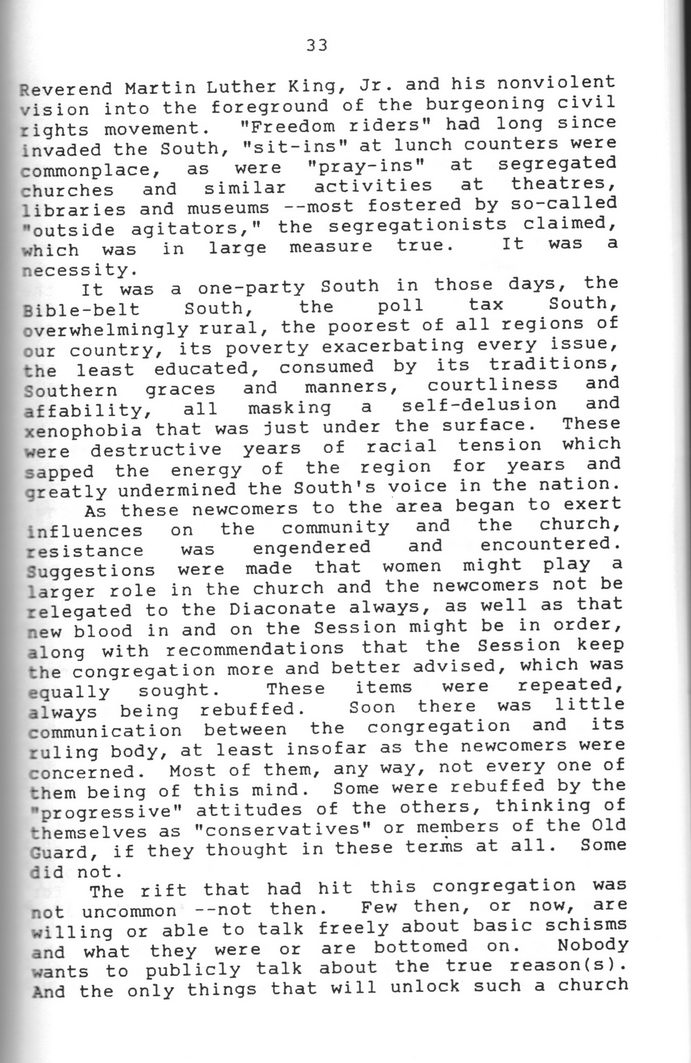This text was obtained via automated optical character recognition.
It has not been edited and may therefore contain several errors.
33 Reverend Martin Luther King, Jr. and his nonviolent vision into the foreground of the burgeoning civil rights movement. "Freedom riders" had long since invaded the South, "sit-ins" at lunch counters were commonplace, as were "pray-ins" at segregated churches and similar activities at theatres, libraries and museums --most fostered by so-called "outside agitators," the segregationists claimed, which was in large measure true. It was a necessity. It was a one-party South in those days, the Bible-belt South, the poll tax South, overwhelmingly rural, the poorest of all regions of our country, its poverty exacerbating every issue, the least educated, consumed by its traditions, Southern graces and manners, courtliness and affability, all masking a self-delusion and xenophobia that was just under the surface. These were destructive years of racial tension which sapped the energy of the region for years and greatly undermined the South's voice in the nation. As these newcomers to the area began to exert influences on the community and the church, resistance was engendered and encountered. Suggestions were made that women might play a larger role in the church and the newcomers not be relegated to the Diaconate always, as well as that new blood in and on the Session might be in order, along with recommendations that the Session keep the congregation more and better advised, which was equally sought. These items were repeated, always being rebuffed. Soon there was little communication between the congregation and its ruling body, at least insofar as the newcomers were concerned. Most of them, any way, not every one of them being of this mind. Some were rebuffed by the "progressive" attitudes of the others, thinking of themselves as "conservatives" or members of the Old Guard, if they thought in these terins at all. Some did not. The rift that had hit this congregation was not uncommon --not then. Few then, or now, are willing or able to talk freely about basic schisms and what they were or are bottomed on. Nobody wants to publicly talk about the true reason(s). And the only things that will unlock such a church

First Presbyterian Church History-of-the-First-Presbyterian-Church-37